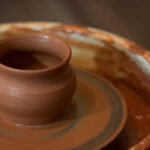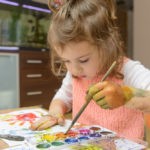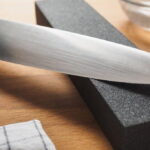Explore the art world with a medium as timeless as creativity itself. This ancient material has been a sculptor’s and potter’s companion for millennia, offering a surprisingly affordable and accessible gateway to artistic expression. Terracotta clay’s versatility knows no bounds. From delicate figurines to imposing sculptures and functional pottery, terracotta earthenware clay allows you to bring your vision to life in various forms.
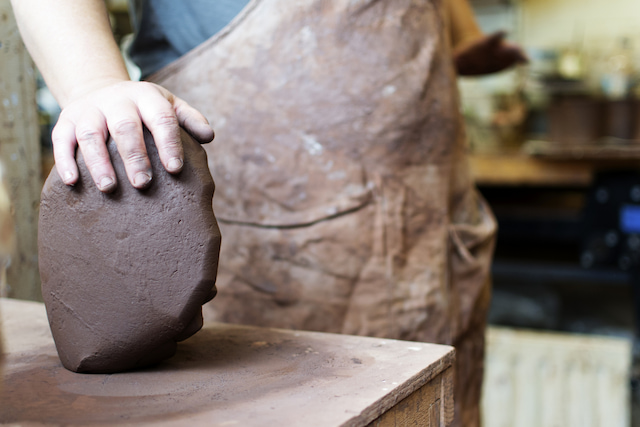
What Is Terracotta Clay?
Terracotta, literally meaning “baked earth” in Italian, is a type of clay prised for its artistic potential. It’s composed primarily of fine-grained particles of minerals like quartz, feldspar, and mica, along with iron oxide. This iron oxide is the key ingredient that gives terracotta its characteristic reddish-brown colour, ranging from light buff to a deep, rich red.
Throughout history, natural and malleable terracotta clays have played a significant role in various cultures. This material has served as a canvas for artistic expression, religious iconography, and even useful objects. From ancient Greece and Rome to the vibrant pottery traditions of Mesoamerica, terracotta’s rich history demonstrates its enduring appeal as a medium for artistic creation.
Air-dry Terracotta – This clay dries out naturally over time, eliminating the need for a kiln, perfect for beginners and quick projects. It’s generally less durable than fired clay but is easier to work with and ideal for creating smaller sculptures or decorative items.
Kiln-fired Terracotta – This type of clay requires a kiln-firing process to reach its full strength and durability. The firing process transforms the clay, making it more water-resistant and suitable for functional pottery or outdoor sculptures.
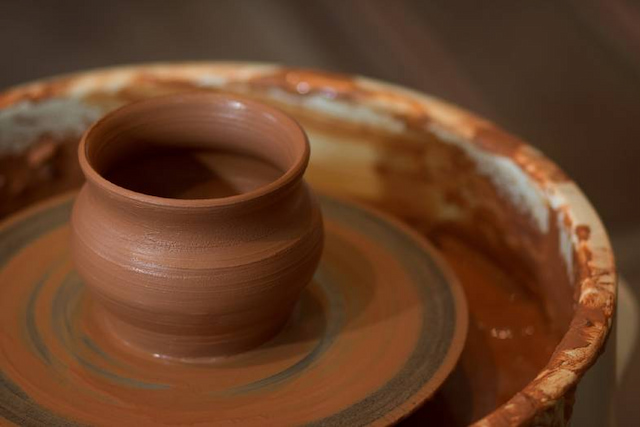
Getting Started with Terracotta Clay
Let’s dive into the wonderful world of sculpting with terracotta clay! To start on this creative journey, you’ll need a few essential tools and materials:
- Terracotta Clay: This is the star of the show! You can find air-dry clay for beginners or kiln-fired clay for projects requiring durability. Look for art supply stores or online retailers that cater to crafting supplies.
- Sculpting Tools: Unleash your inner sculptor with a variety of tools! A set of pottery knives allows for shaping and cutting the clay while sculpting tools with different textures can add unique details to your creations.
- Rolling Pin: Evenly roll out clay slabs for building forms or creating flat decorative pieces.
- Water Containers: Keep a container of clean water on hand for smoothing the clay and preventing it from drying out while you work. A spray bottle helps mist the clay occasionally.
- Work Surface: Protect your workspace with a plastic sheet or scrap paper. A smooth, flat surface like a table or countertop provides a sturdy base for sculpting.
Now that you have your tools gathered, here are some tips for preparing your workspace. Start with a clean work area free of clutter. This will help you stay focused and prevent accidental contamination of your clay. Ensure your workspace has good lighting so you can see the details of your sculpting. Natural light is ideal, but an adjustable lamp can work too. Working with clay can involve some dust. Choose a well-ventilated area to work in, or open a window for fresh air circulation.
Basic Techniques for Working with Terracotta Clay
Transforming a lump of clay into a masterpiece requires a few fundamental techniques. Of course, practice makes perfect, but understanding the basics will help you get started on your journey to becoming a skilled artist.
Wedging
Before diving into sculpting, it’s crucial to prepare your clay properly. Wedging is the process of kneading the clay to warm it up, remove air bubbles, and achieve a uniform consistency. Air bubbles trapped within the clay can cause cracks or weak spots in your finished piece. Imagine the clay as a loaf of bread.
Fold it in half repeatedly, pushing out any air pockets. Give the clay a quarter turn each time you fold it to ensure you’re working the entire mass. Continue wedging for a few minutes until the clay becomes smooth and pliable, free of cracks or air bubbles.
Sculpting Techniques
Once you’ve mastered the basics of hand-building, unleash your inner sculptor! Sculpting tools can be used to shape and refine your clay creation. Pottery knives come in various shapes and sizes, allowing you to cut, trim, and shape the clay. Ribs with rounded edges are used for smoothing surfaces and blending seams.
Modelling tools with various textures can add details and patterns to your sculptures. Start with large, coarse movements, when shaping your clay and gradually refine the details. Use a light touch and add water sparingly to keep the clay moist and workable.
Attaching Clay Pieces
As you build your sculpture, you might need to connect different pieces securely. Before attaching two clay pieces, lightly scratch the surfaces with a pottery knife to create a rough texture. This will provide a better grip for the “slip,” a liquid clay mixture made from leftover clay scraps and water. Apply a thin layer of slip to both surfaces, then press them together firmly. Small paper or toothpicks inserted into the joining areas can provide additional reinforcement.

To Sum Up
The world of sculpting awaits! With its rich history and user-friendly nature, terracotta clay is an excellent medium for anyone eager to explore their artistic potential. Unlike intimidating carving techniques, terracotta clay offers a forgiving and approachable way to bring your creative visions to life.
Dive into a world of creative exploration with these fun and inspiring projects, keeping kids entertained and unleashing their artistic potential! The beauty of terracotta clays lies in their versatility. Whether you’re a complete beginner or a seasoned artist, even fun and interesting crafts to keep kids occupied, from simple pinch pots to intricate sculptures, the possibilities are endless.

